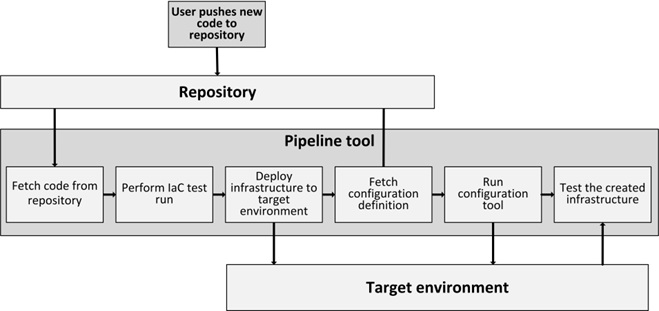Infrastructure as Code pipelines
Infra-as-code pipelines are tools that perform predefined steps to deploy infrastructure. There are many tools available for building pipelines, including Jenkins, Bamboo, AWS CodePipeline, and Azure DevOps.

As shown in the figure above a pipeline for IaC can perform the following steps to create a new infrastructure environment.
- The IaC code is stored in a version control system. Any changes made to the infrastructure code triggers the pipeline to run automatically.
- The new code is fetched from the repository.
- A test run is performed to check if the code has no errors and could be deployed in the target environment.
- After the code passes the test, it is deployed to the target environment using IaC tools.
- After all infrastructure components are created, the configuration definition is fetched from the repository.
- The configuration tool automatically configures the infrastructure components, based on the configuration definitions, leading to a running, configured infrastructure component.
Once the infrastructure is deployed, it needs to be validated to ensure that everything is working as expected.
This entry was posted on Sunday 29 December 2024
 Dutch
Dutch